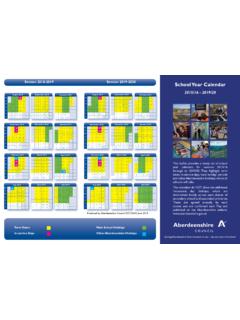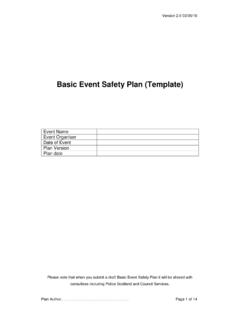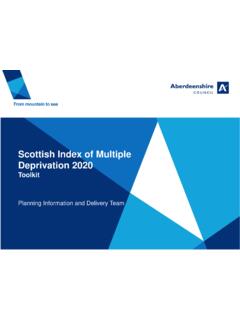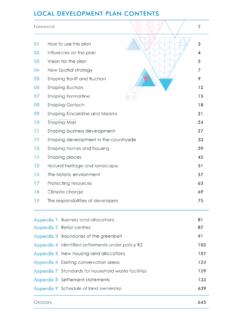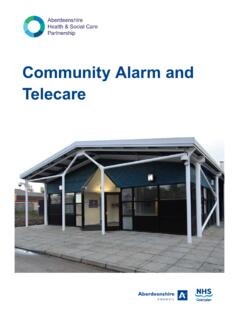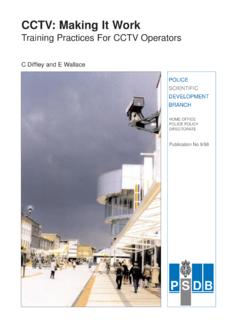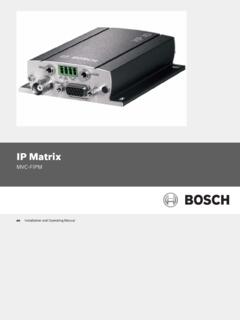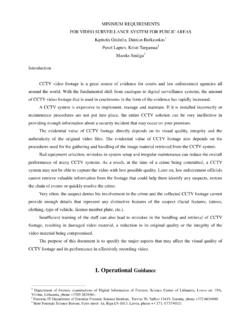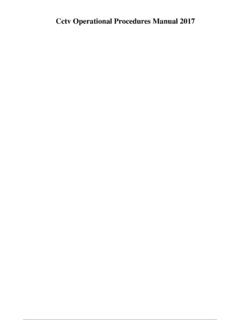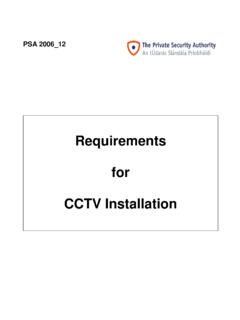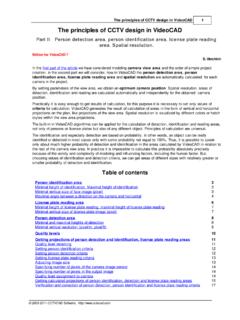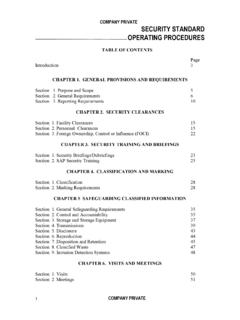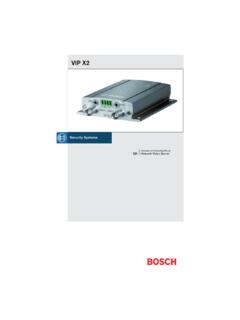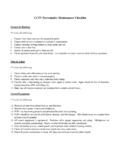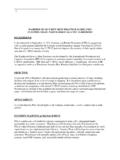Transcription of LICENSING (LIQUOR) CCTV GUIDANCE - aberdeenshire.gov.uk
1 NOT PROTECTIVELY MARKED NOT PROTECTIVELY MARKED Version Page 1 of 7 LICENSING ( liquor ) cctv GUIDANCE Author Richard Fergusson Date 21 August 2013 Version NOT PROTECTIVELY MARKED NOT PROTECTIVELY MARKED Version Page 2 of 7 Introduction Amendments to the liquor LICENSING act in Scotland came into force in February 2008. A condition of regular extended hours beyond 0100 Hrs now includes mandatory cctv provision to the satisfaction of the Chief Constable in certain, defined late night opening premises. This specification documents the minimum requirements for qualifying Licensed Premise cctv systems to meet in Scotland. Additional cameras or features may be added to the cctv system as the management of the premises sees fit as long as these additional features comply with relevant legislation.
2 Items referred as Required are mandatory, those referred to as Advised are not but should be considered as Good Practice . References This specification makes reference to Home Office and Information Commissioner Documents these should be read in conjunction with this specification (see section 11). Where camera performance is given in italic parenthesis reference should be made to the Home Office cctv operational requirements manual Data Protection Act 1998 Notwithstanding any of the requirements contained in this document, systems MUST comply with the requirements of the Data Protection Act (DPA). It is the responsibility of the premises management to ensure this requirement is complied with. The capture of Audio with images in areas which are considered public spaces is not permitted by the DPA.
3 However in private areas within premises lip synchronised audio capture is advised where a high interaction between staff and patrons is envisaged. NOT PROTECTIVELY MARKED NOT PROTECTIVELY MARKED Version Page 3 of 7 4 Camera Positions Required: All points of entry to or exit from the premises must be captured by at least 1 fixed cctv camera. (A Fixed cctv Camera has a set view, set at installation and cannot be altered other than by a physical means.) The cameras field of view should capture the identity of patrons as they enter or exit the premises. Dome cameras should not be used external to premises as their performance can be adversely affected by extreme weather conditions. Required: Cameras must be either tamper resistant or mounted in a way that makes them tamper resistant. Dome cameras by their design are considered as tamper resistant.
4 Advised: cctv cameras are installed to recognise patrons where they may be required to wait in line or congregate adjacent to points of entry to the premises. Advised: cctv cameras are installed to observe internal areas of high footfall and low supervision including customer/staff interaction areas bar, counters etc Audio capture should be considered where needs dictate. Information: All cameras covering areas of high footfall or customer staff interaction areas should give clear Recognisable images of all persons as defined in the Home Office cctv operational requirements manual . 5 Lighting Required: Lighting of sufficient luminance must be installed to fully support cctv cameras at all points of entry/exit. NOT PROTECTIVELY MARKED NOT PROTECTIVELY MARKED Version Page 4 of 7 Required: At points of entry or exit the lighting must be sufficient so that the perception of colour is relatively accurate (a minimum value of 60 on the Colour Rendition Index is advised.)
5 Advised: Flat consistent illumination at points of entry/exit to reduce shadowing. Information: cctv camera performance is adversely affected in low ambient or quick changing light levels. The performance of systems working under low light conditions may not provide sufficient resolvable images for the purpose of evidence. 6 Recording Required: All cctv cameras images must be recorded on a digital video cctv recorder. Required: A minimum image capture rate of frames per second is required, preferably 25fps. Required: Good quality cctv images must be captured at a minimum of 4 CIF. Required: The recorder must be capable of continued recording when replay of images takes place. Required: Images must be retained on the digital recorder for a period of 7 days or more. Advised: If a greater retention period is chosen it should reflect the organisations own purposes and should be the shortest possible based on experience (Reference: The Information Commissioners cctv Code of Practice).
6 NOT PROTECTIVELY MARKED NOT PROTECTIVELY MARKED Version Page 5 of 7 7 Image Retrieval Required: Retrieval of images from the digital video recorder must meet the following requirements . 1. The evidence must be able to be exported from the digital video recorder to one or more of the following media: USB2 hard drive DVD CD USB Memory Stick CF/SD Flash memory 2. The evidential image file must be accompanied on the export media by its native playing software to be viewed in the format in which it was originally recorded. 3. The playing software must be licence free. 4. The playing software must be playable on the Windows XP operating system. 5. The playing software and evidence must be playable from the media on which it is recorded and must not require installing, or any component part, on the PC on which it is played.
7 6. The playing software must not require access to the registry of the computer on which it is played. 7. The evidence must be saved without encryption or password protection. Advised: The Crown Office & the Procurators Fiscal Service (COPFS) has adopted for presentation of digital evidence in court MPEG2 for video and MP3 for audio. It is recommended that systems are also able to output directly to this format. 8 Image Viewing Required: The cctv system must include a method for viewing and reviewing images. This should be a 17inch cctv monitor or better which can be switched to view each cctv camera individually. NOT PROTECTIVELY MARKED NOT PROTECTIVELY MARKED Version Page 6 of 7 Required: The set up and performance of each entry/exit camera must be easily confirmed. Required: All point of entry or exit cameras must give clear Identifiable images of all persons as defined in the Home Office cctv operational requirements manual .
8 Required: All images captured must be clear, easily viewed and of sufficient quality to be used as evidence in court. Required: All images must be accompanied by date and time stamps. (Correct date and time settings must be confirmed or offsets noted when an evidential copy of evidence is taken from the cctv system.) Advised: That the layout of the door entry arrangements should provide Pinch Points that will assist the cctv system achieving consistent identifiable images. These pinch points must not be achieved at the expense of health and safety considerations. 9 Training Required: Sufficient staff must be trained in the operation of the cctv system, and at least one member of staff who is able to retrieve images for evidential purposes should be on duty at all times. 10 Maintenance Required: All faults must be rectified within a maximum of 7days.
9 NOT PROTECTIVELY MARKED NOT PROTECTIVELY MARKED Version Page 7 of 7 Required: A maintenance log must be kept reporting faults, their rectification and the systems maintenance schedule. Required: The system must be tested on all business days to verify that all cameras are working satisfactorily. The result of the test must be logged daily and any faults found reported for repair. Required: Reference manuals for all parts of the cctv system must be held locally. 11 References: 1. Home Office cctv operational requirements manual : 2. The office of the Information Commissioner s cctv code of practice.

